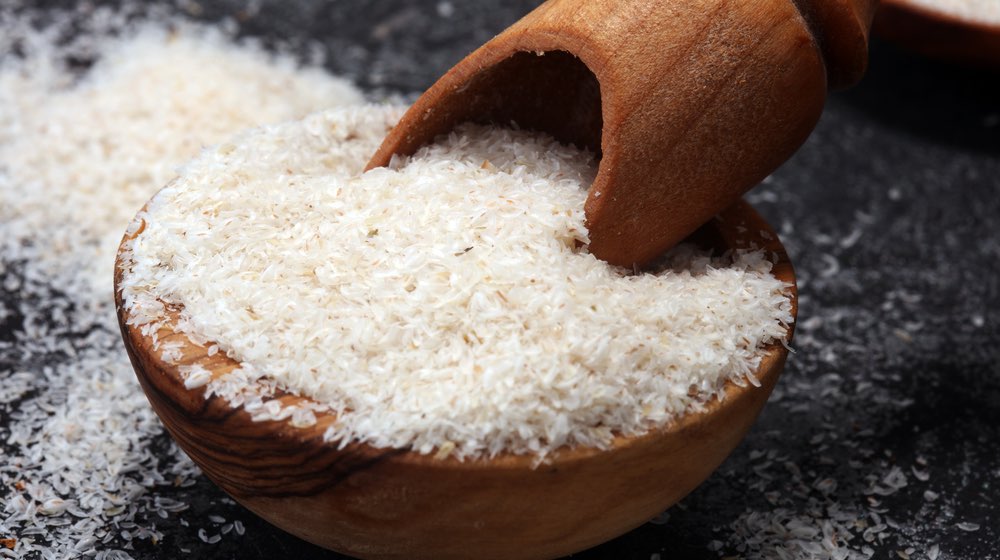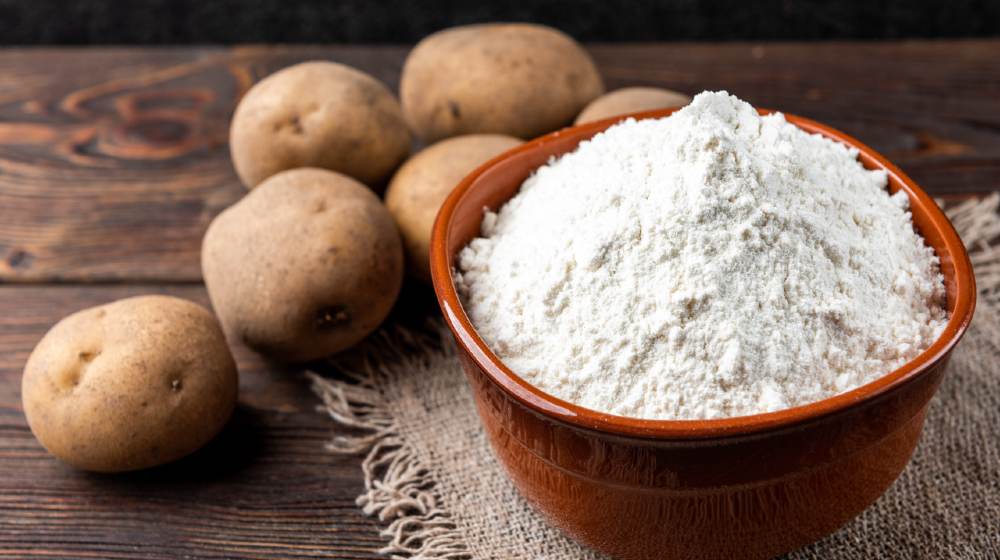FOR several chapters now I've been acquainting you with protein and explaining why protein is your first food need. Actually, the protein story is so old it's new.
RELATED: 10 Healthy Carbs To Add To Your Diet
Why Too Much Starch Is Dangerous
There were no nutrition scientists and health teachers to warn our prehistoric cavemen ancestors that if they wanted to be alert and powerful enough to survive the incredible dangers of life in their era, they had to “eat their protein every day.”
What these apemen ancestors of ours did was to grab a piece of meat-more than likely raw or only half-cooked-and wolf it down. It was their instinct to seek food that satisfied their hunger cravings and kept them strong enough to meet the physical problems of their rigorous lives.
Even today, the instinct for protein, man's best energy food, is strong among primitive peoples, although the supply of such food available to them may be scarce.
The more primitive tribes, living in regions of Africa where the hunting of wild animals is not plentiful enough to supply their instinctive appetite for meat, attempt to satisfy this craving by eating grubs and caterpillars, by trapping birds, mice, and ground squirrels. “Unpleasant eating,” you say. And I agree. But protein, nevertheless, is an appeaser for the hungry native's craving for energy food.
With all the bountiful sources of tasty protein foods available to us, we can afford to look down our noses at the hungry African's revolting habit of eating caterpillars and mice.
But now I'm going to shock you: Between our national habit of gorging ourselves on starch-and-sugar foods and guzzling soft drinks, and the native's taste for worms and varmints, the primitive black man has more nutritional justification for his choice than do we for our substandard diets in this land of “culture and enlightenment.”
At least the African is sticking to natural, energy-giving protein foods, while we are pandering to an artificially created appetite for starch-and-sugar foods which are doing more to make old men and women of us long before our time and to weaken us as a nation, than any other single factor.
Please don't misunderstand me. I enjoy a wedge of pie, a slice of cake, a piece of candy, or a plate of spaghetti as thoroughly as anybody. But I recognize these artificial foods for what they really are-dissipations, not nutrition. I realize these heavy starches and sugars are life-shorteners, not youth preservatives.
Life would be pretty dull if we always did what we should. Of course, you would be far better off if you never let another bite of rich, starchy, artificial food pass your lips. But you are going to fall from grace anyway-even as I sometimes do myself.
And it's a whole lot better for your psychology to say nothing of your opinion of your will power-if you are given a 1 percent margin for “nutritional sinning”! That is why I always include a 1 percent dissipation margin in my Eat-and-Grow-Younger program. But you must keep it the margin, and not your mainstay.
There is a proper time to sin on sugars and starches, but that time is not at your regular mealtime. If you feel that you have to munch on a piece of candy, or eat a slice of cake, by all means, do so at very rare intervals, between meals, and far enough away from the next meal so that you don't take the edge off your appetite for the youth-protecting protein foods.
But never, if you wish to derive any benefit from this Eat-and-Grow-Younger regimen, include heavy starches with your high-protein meals.
In the menus prepared for you in Part II, I have provided desserts that are both appetizing and nourishing. Their food values are calculated in that day's total protein nutrition, so if you sneak in a rich, starchy dessert (pure starch, no vitamins, no minerals, and certainly no protein) instead of the ones shown, you'll only be cheating yourself.
Like many other blackguards, starch has several aliases. When he wants to work his way into the good graces of his unsuspecting victims, he assumes the highly formal name of carbohydrates. And when he wants to appear at his most tempting, he becomes sugar. But it is as starch that he is commonly known.
Artificial starches and sugars are saboteurs. They sabotage your youthfulness, your mental agility, your power to be a vigorous, radiant person, glowing with health and youthful energy. Stealthily they undermine your sexual powers. Like thieves in the night, they rob you of your good looks.
Unnecessary aging begins with starch addiction. Yes, that is the correct word, for it is an addiction, nothing less. More than half the American populace stays on a perpetual drunk-a sugar jag.
The ardent anti-saloon leaguer who points a pious finger at the village drunk, and then goes home to three meals a day of heavy starch dishes-pies, cakes, rich puddings, plus munchings of bonbons and gulpings of sweetened beverages-is as intemperate as the old soak who tanks up at the corner tavern.
Any physician can verify this overindulgence in starches as a true addiction from his years of experience with the cheating done by obese or diabetic patients who are supposed to abstain from rich, artificial foods.
Because of their longstanding addiction, these “food tipplers” cannot refrain from sneaking a bite here, a portion there, even though their health-their very lives-depends on a drastically curtailed consumption of sweets and rich foods.
Physicians have discovered that no chronic alcoholic going through “the cure” can invent more excuses for cheating than these starch drunkards.
I am justified in calling these cravings an addiction, because carbohydrates (sugars and starches) are converted in the human body into a type of sugar which, in great quantities, gives the identical “lift,” or satisfaction, like that experienced by an alcoholic when he yields to his abnormal cravings.
The sweet habit takes hold with almost as tenacious a grip as do certain drugs. Anything to achieve that temporary feeling of energy and buoyancy, no matter how costly the habit may be to the body in the long run. The nervous system of a person continually starch drunk can be undermined just as surely as that of a chronic alcoholic.
But I must be careful not to give all carbohydrates a black eye, for like many villains there is also a good side to our bad man. The carbohydrates found in vegetables, fruits, milk, whole grain,s, and seed cereals are well provided from natural sources.
These foods also contain varying amounts of protein (something wholly lacking in artificial starches), in addition to valuable minerals and vitamins, and furnish a necessary contribution to your Eat-and-Grow-Younger diet. It's only when carbohydrates wander too far from the “straight and narrow path” of good nutrition that they become harmful.
You are certainly not going to be advised to pass up all sweets in this Eat-and-Grow-Younger program. Instead, you're going to convert to sweets that, before long, will have you turning up your noses at a gooey cake made with white sugar and white flour.
Not only are the flavors of the natural delicacies provided for you “fit for the gods,” but they are sweets that actually help you stay young. “What sweets are these?” you ask, half curious, half skeptical. I will post some recipes later.
But first I want to make sure that you understand the character of the artificial carbohydrates which, I'll wager, have made up about 95 percent of your sugar-and-starch intake for many years.
You are not alone in this serious nutritional error, for it is an accepted American custom to serve a menu something like this: fried potatoes, meat, white bread, artificially-flavored gelatin salad, chocolate pie, and coffee (sweetened, of course, with white sugar).
I am not quoting this as some far-fetched menu seldom encountered on a dinner table. This is a menu copied word-for-word from a newspaper article dated February 18, 1951, describing the foods in the chow line of the enlisted men's mess at a large army camp in the East-a place where nutrition supposedly would be at its scientific best.
Yet there was white bread made of devitalized grain, a salad made with a gelatin that is artificially flavored and colored with coal-tar dyes and sweetened with white sugar (as are most artificially flavored, ready-prepared gelatin desserts), chocolate pie made of more devitalized white sugar and more white flour, with still more refined white sugar in the coffee.
No, indeed, we Americans need never worry about not getting “enough” carbohydrates. Our danger comes from getting too much of the wrong kind of carbohydrates.
Anti-Aging Secrets from AntiAgingHealthProducts.com [http://www.antiaginghealthproducts.com] Get Paid to Submit Articles. Click here Now [http://www.thearticlesense.com/user/leokadia]
Article Source: https://EzineArticles.com/expert/Luzia_Braun/139877
UP NEXT:
- 5 Health Benefits of Dark Chocolate
- 5 Easy Ways to Curb Sugar Cravings
- 7 Ways to Practice Self-Love For People Over 50
Please stay connected with us on Facebook, Twitter, Instagram, and Pinterest, and make sure to join our community of healthy living and minded people here.
Article Source: http://EzineArticles.com/
Trending
Tongue Color | 7 Scary Tongue Color Meanings
Lecithin Benefits and Side Effects: 10 Surprising Truths
Get Updates
SIGN UP FOR OUR NEWSLETTER TODAY

Best Multivitamin for Men | Top 10 Best Multivitamins for Men 2022

Lecithin Benefits and Side Effects: 10 Surprising Truths

Related

Best Multivitamin for Men | Top 10 Best Multivitamins for Men 2022

